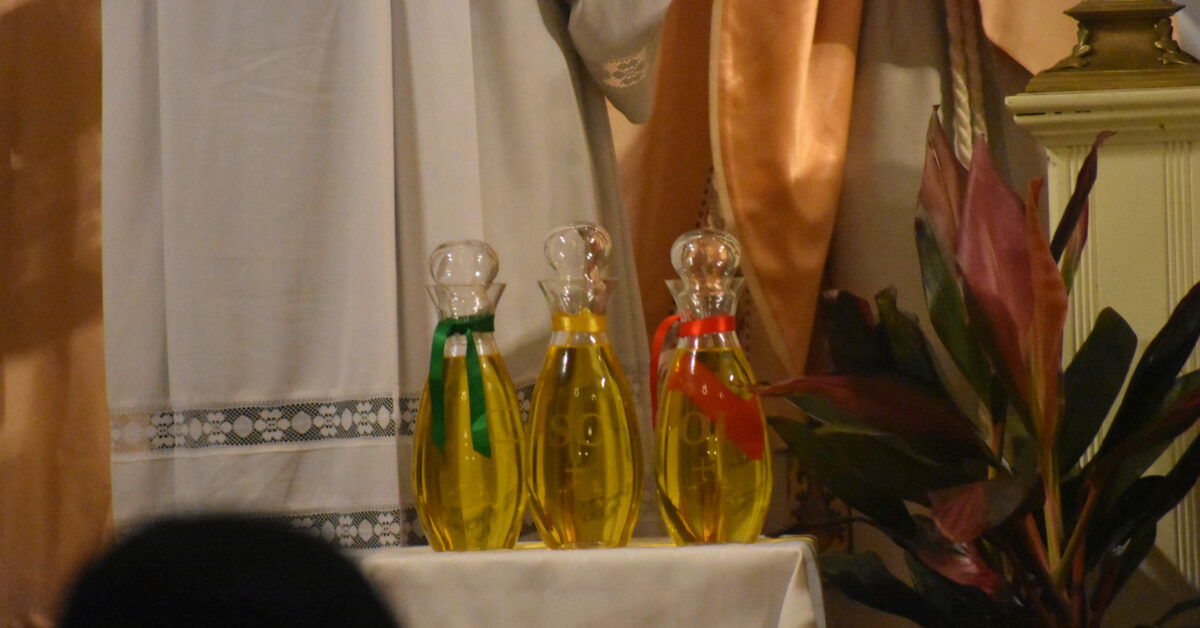A Ritual Journey: Holy Saturday Rites
The period of purification and enlightenment (intense preparation) concludes with final preparation for the rites of initiation at the Easter Vigil, including several rites designated for Holy Saturday. Ideally Saturday before the Vigil is spent, as the RCIA indicates, “in prayer and reflection, and, as far as they can, observe a fast” (185). Guide for Celebrating Christian Initiation with Adults (GCCIA) advocates that
The best way to help the elect spend at least part of the day in preparation would be for them to gather with catechists, pastors, and other members of the community who have supported them, including sponsors, godparents, family members, and friends for a time of prayer and preparation. The time together could include a simply walk through of things the elect will want to know for the evening…A brief explanation of the movements of the night’s liturgy will be helpful…The time together could also include a simple fasting meal, such as soup and bread (74).
Shawn Madigan promotes the giving of notes of encouragement and support from those who have journeyed with the elect (Madigan, Liturgical Spirituality and the Rite of Christian Initiation of Adults, 62). All of this prepares the elect to enter into their passover from death to life through Holy Baptism. As Madigan urges,
Holy Saturday is a day to be glad in the Lord. The day itself is a “before” for the Easter Vigil. The director of the elect and candidates can introduce the paschal mystery of this night in many ways. The mystery of the solidarity of all creation in Christ from the beginning of the creation mystery until the final “alleluia” of the eschaton will unfold at the Easter Vigil (62-63).
In addition to this focus on prayer and reflection, preparation on Holy Saturday can include four rites:
- Choosing of a Baptismal Name/Interpretation of Given Name
- Anointing with the Oil of Catechumens
- Ephphetha Rite
- Return of the Creed
These four rites can be incorporated into a simple service of the Word following this pattern:
- Hymn
- Greeting
- Reading of the Word of God
- Homily
- The Rites (chosen from those listed above)
- Prayer of Blessing and Dismissal (RCIA, 116)
Each of the preparatory rites have readings associated with them and the reading(s) would be chosen from among those provided. Hymns and songs could separate the various elements of this brief service of the Word. The role of the homily would be to interpret the rites celebrated for the elect and to point them toward the culmination of their journey at the Easter Vigil.
The choosing of a baptismal name (not usually observed in US Roman Catholicism; could be observed if not already done during the rite of acceptance into the order of catechumens) can entail either choosing another name associated with one’s baptism or the unpacking of a person’s given name in relationship to the biblical story and/or church history. While a practice with which Lutherans are not familiar, it has certain value. It allows the individual either to choose a new name or connect their given name with God’s grace as associated with a saint or a particular story in the history of the church. This provides the newly baptized with a saint to emulate and a connection into the continuous story of God’s promise throughout church history.
In addition, Holy Saturday could be the last time the oil of catechumens is received by the elect. [We discussed this in the post entitled “Anointings of the Catechumens”.] While anointing on Holy Saturday is not officially permitted in US Roman Catholicism, there is no reason Lutherans could not include a final catechumenal anointing on Holy Saturday to indicate the transition from the elect to the baptized. We’ll turn to the other two rites associated with Holy Saturday next week.
